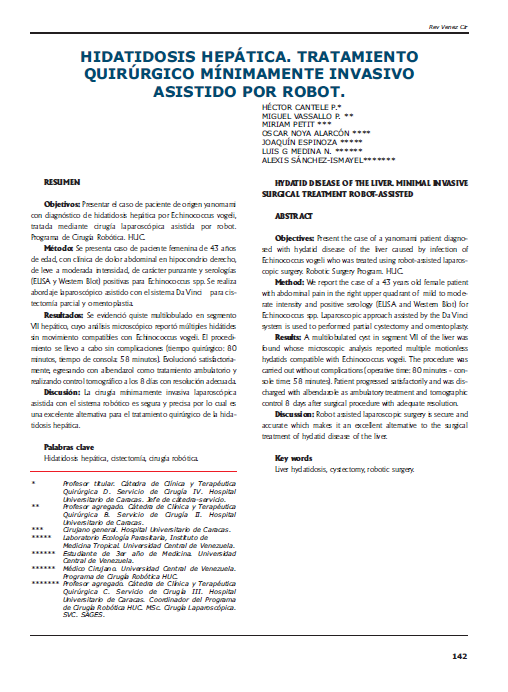Abstract
Objectives: Present the case of a yanomami patient diagnosed with hydatid disease of the liver caused by infection of Echinococcus vogeli who was treated using robot-assisted laparoscopic surgery. Robotic Surgery Program. HUC. Method: We report the case of a 43 years old female patient with abdominal pain in the right upper quadrant of mild to moderate intensity and positive serology (ELISA and Western Blot) for Echinococcus spp. Laparoscopic approach assisted by the Da Vinci system is used to performed partial cystectomy and omentoplasty. Results: A multilobulated cyst in segment VII of the liver was found whose microscopic analysis reported multiple motionless hydatids compatible with Echinococcus vogeli. The procedure was carried out without complications (operative time: 80 minutes - console time: 58 minutes). Patient progressed satisfactorily and was discharged with albendazole as ambulatory treatment and tomographic control 8 days after surgical procedure with adequate resolution. Discussion: Robot assisted laparoscopic surgery is secure and accurate which makes it an excellent alternative to the surgical treatment of hydatid disease of the liver.

This work is licensed under a Creative Commons Attribution-NonCommercial 4.0 International License.
Copyright (c) 2020 REVISTA VENEZOLANA DE CIRUGÍA
